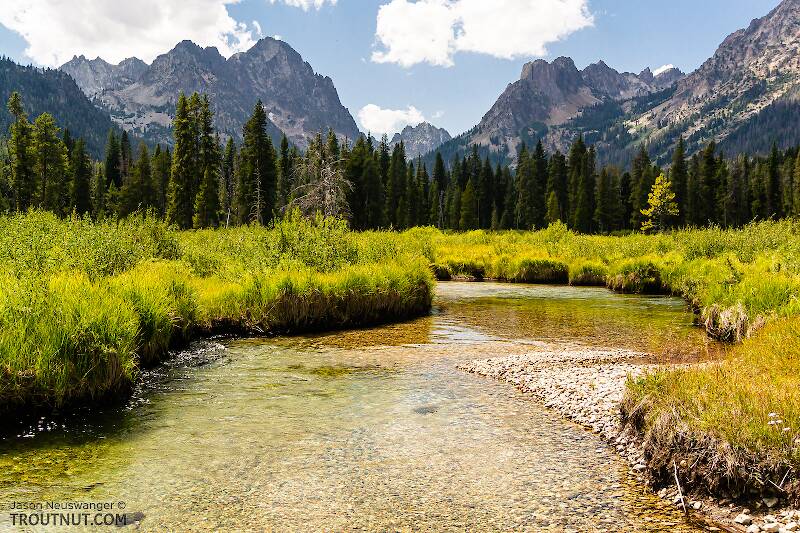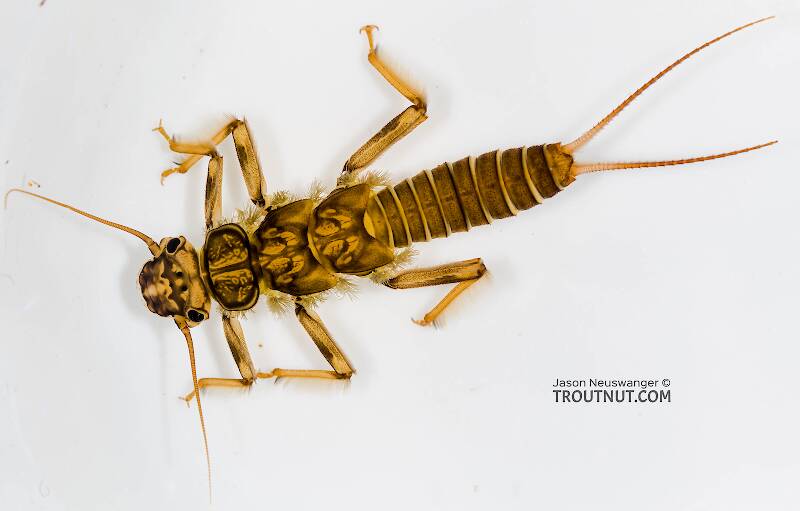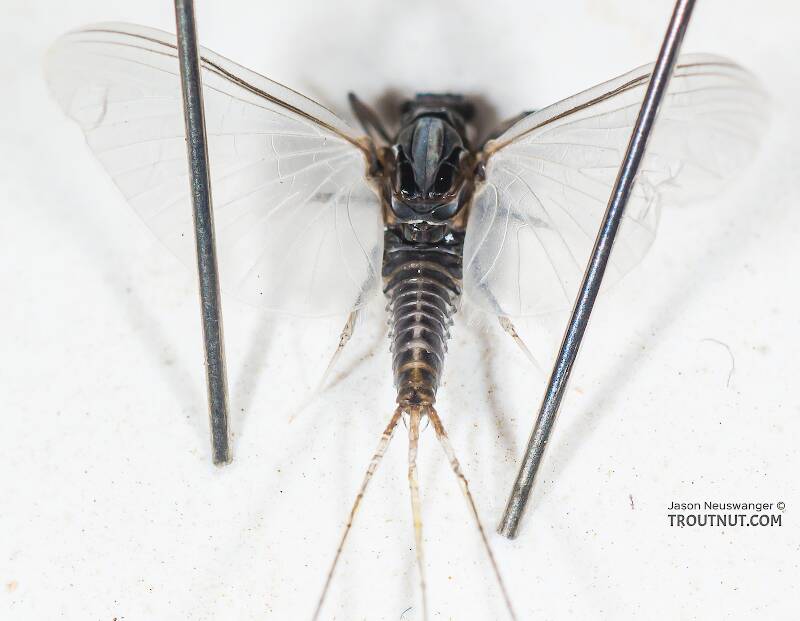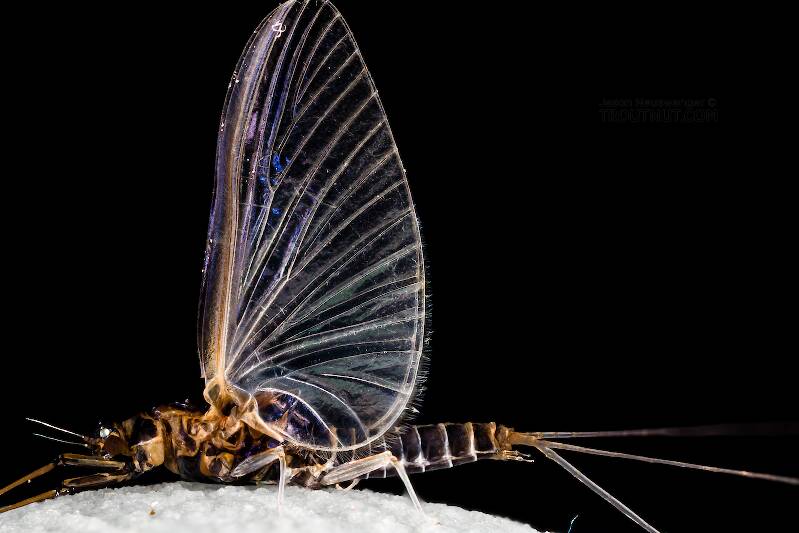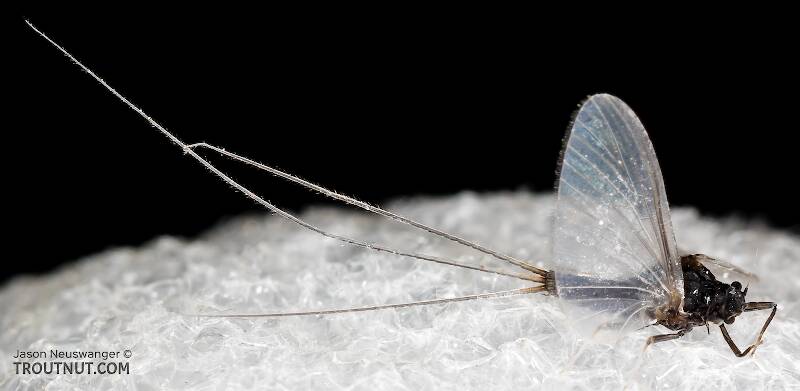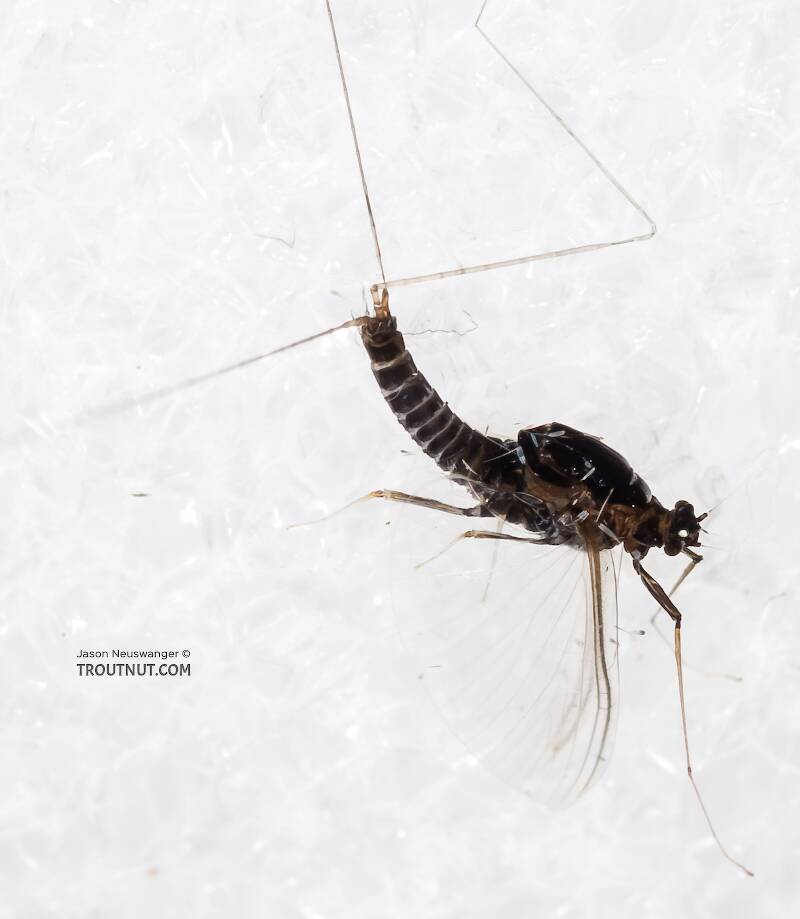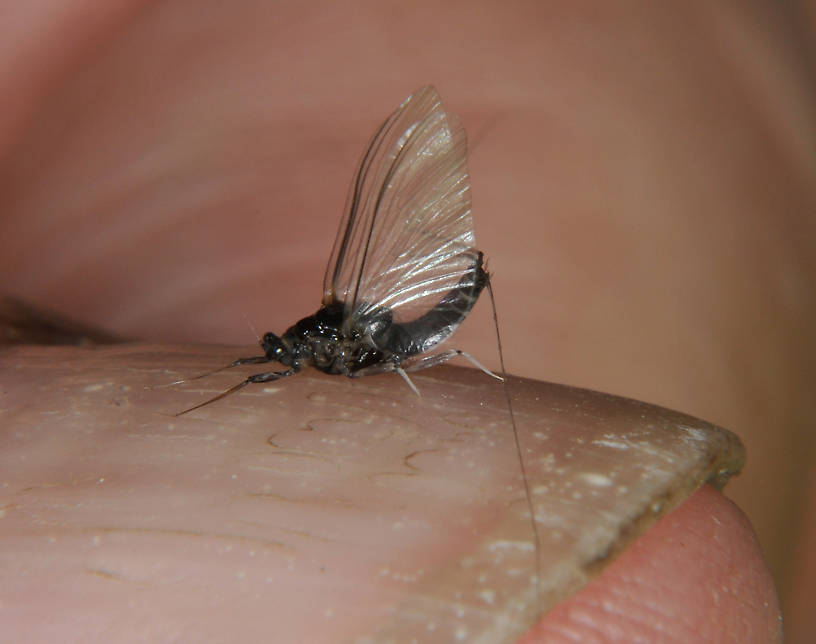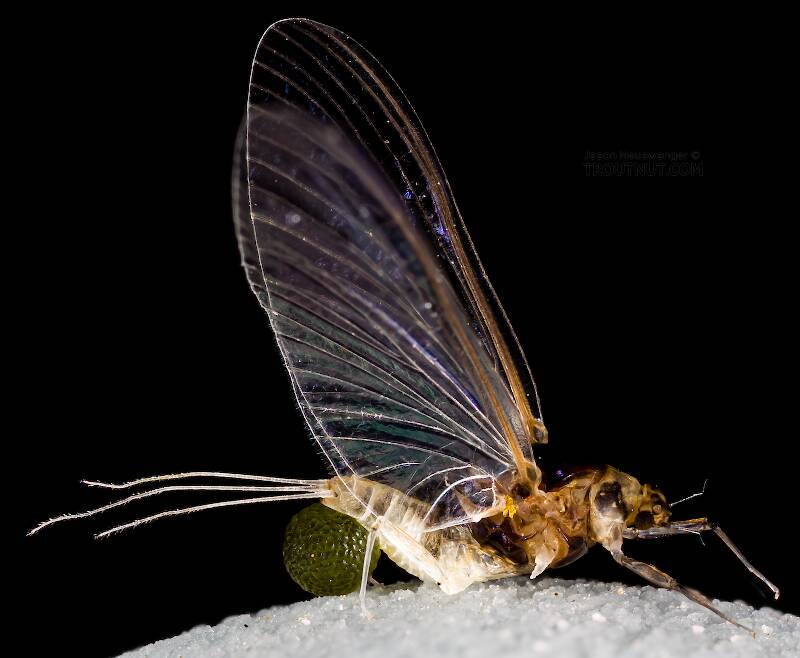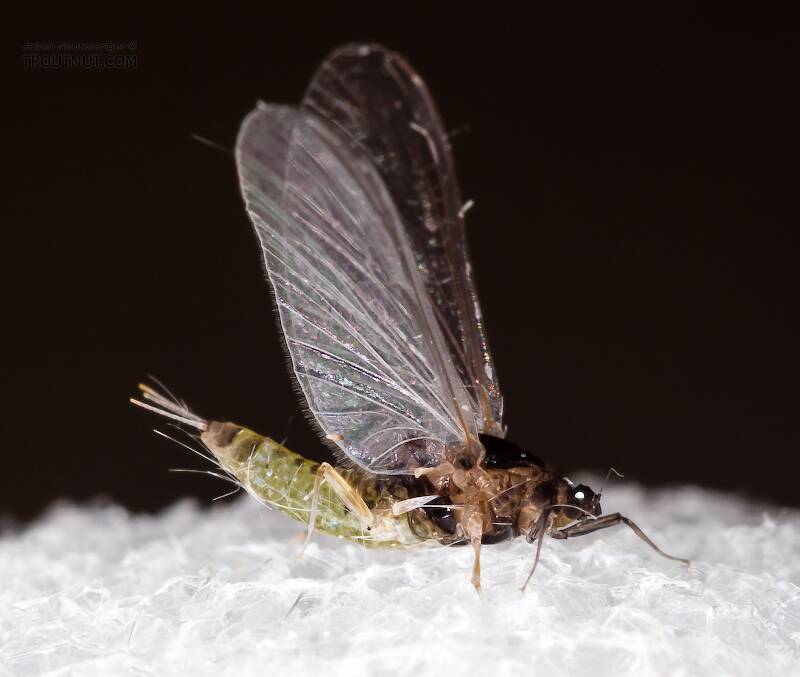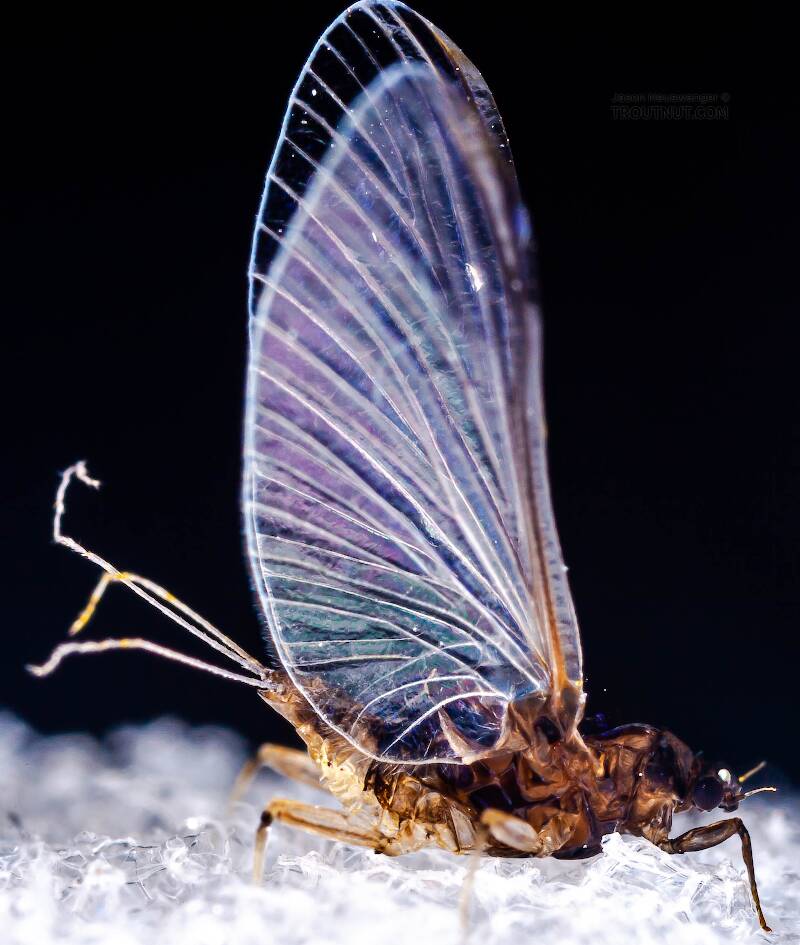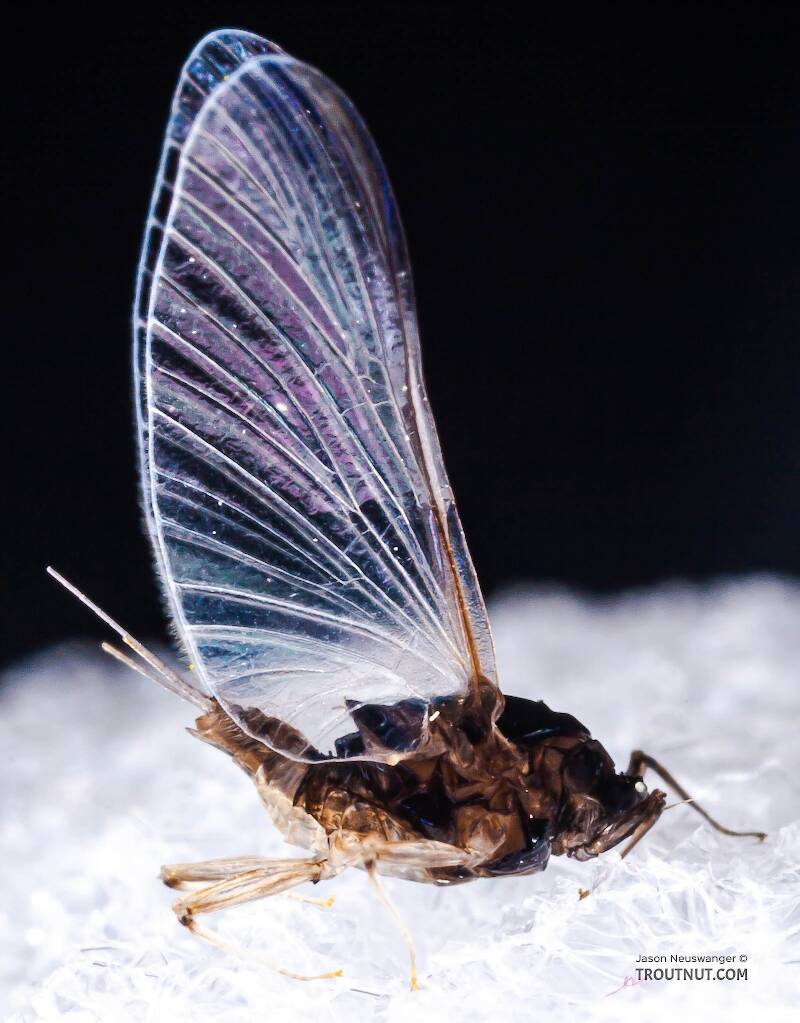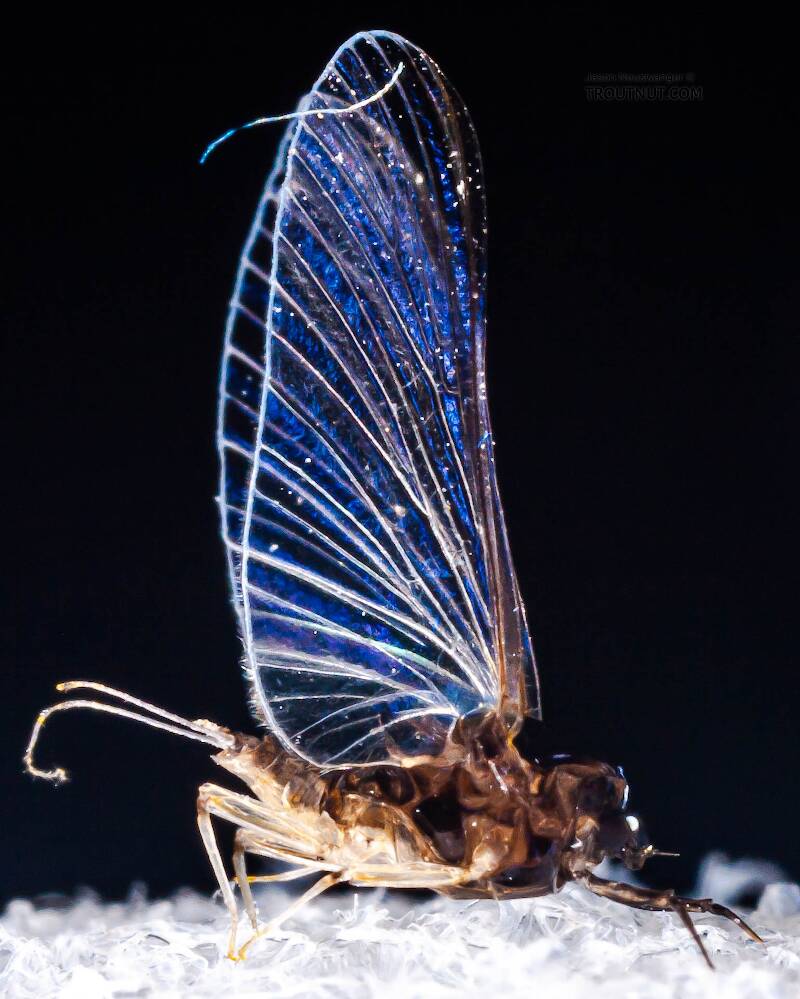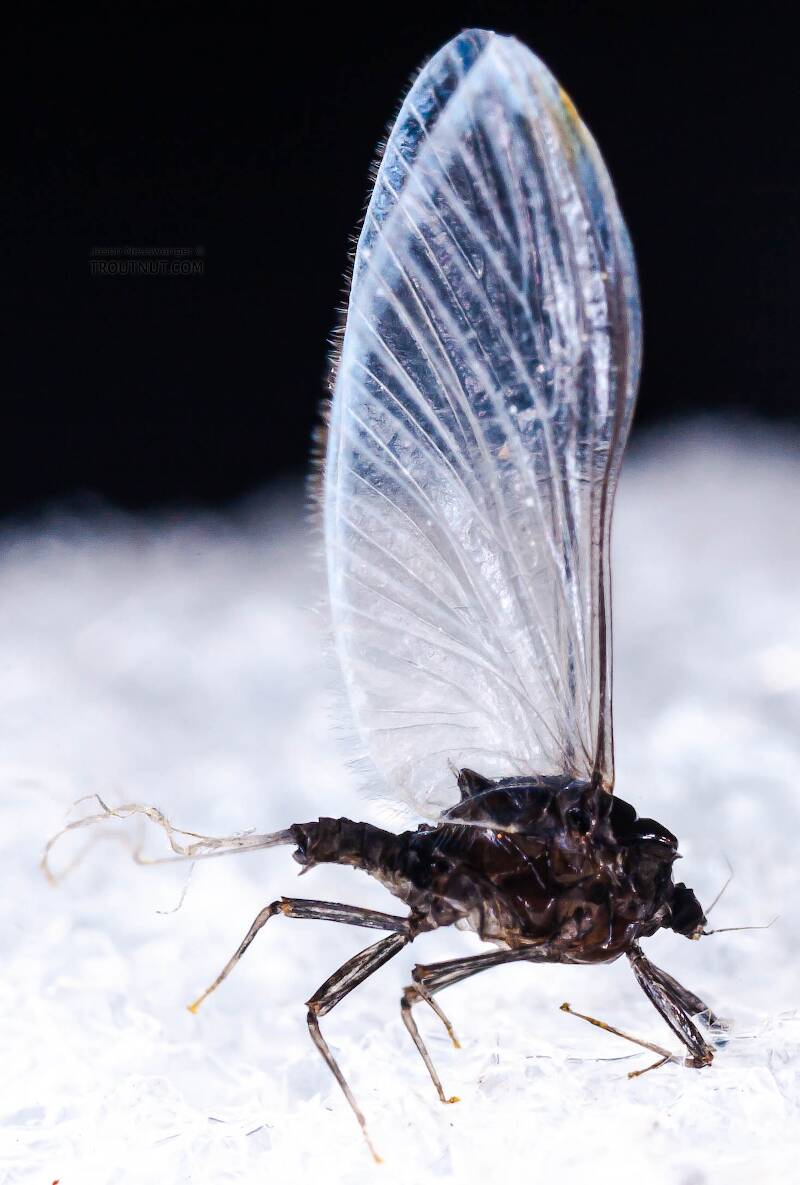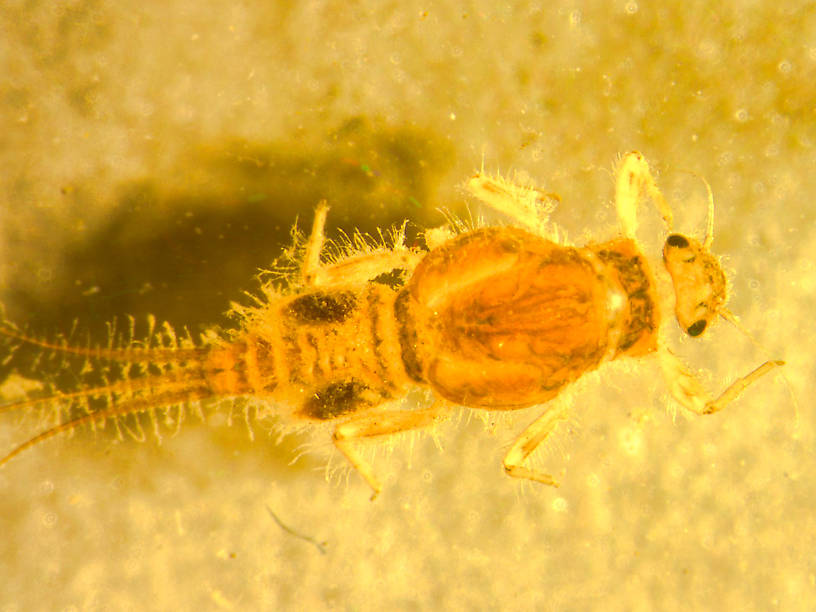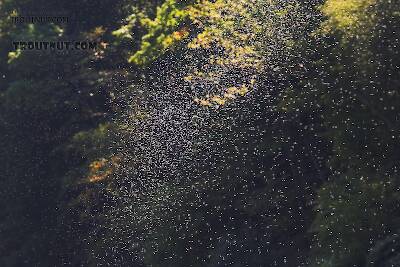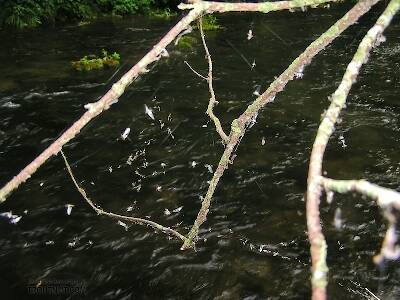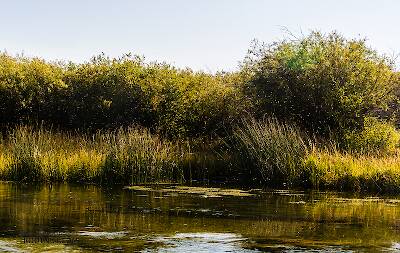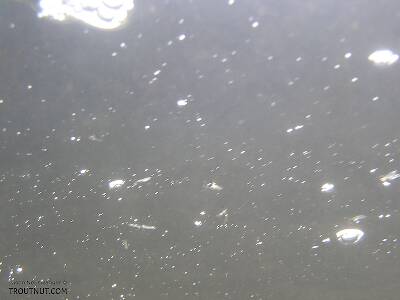
Blue-winged Olives
Baetis
Tiny Baetis mayflies are perhaps the most commonly encountered and imitated by anglers on all American trout streams due to their great abundance, widespread distribution, and trout-friendly emergence habits.

Mayfly Genus Tricorythodes (Tricos)
It is surprising that such a great hatch took so long to come to the attention of fly fishermen. The Tricos were first introduced to anglers in a 1969 Outdoor Life article by Vincent Marinaro, who misidentified them as Caenis. By the early 1970s the identification had been corrected but Swisher and Richards still wrote in Selective Trout, "Few anglers are familiar with these extremely small but important mayflies." The next wave of publications boosted Tricorythodes to its current fame. I suspect their early dismissal was due in part to tackle limitations; anglers in the 1950s had no means to effectively tie and present size 22-28 flies.
Where & when
Time of year : Late June through November; best from late July through early September
Preferred waters: Cool streams; best in alkaline spring creeks
The literature about the distribution of Tricorythodes species is a bit confusing, but the general impression is that Tricorythodes stygiatus is the most important in the East, followed by Tricorythodes allectus and then Tricorythodes minutus. The latter species is the most important in the West, where it can grow up to hook size 18. Because of the difficulty of identification and wide variation within species, there is no need to learn to identify them. Instead, check with local fly shops for the preferred hook size on your rivers.
Trico action tends to be more intense during the heat of summer, when the flies must finish their business early before the hot sun dries them out. Later in the season their deadline is less strict and they become sporadically active through most of the morning.
In 73 records from GBIF, adults of this genus have mostly been collected during July (30%), September (21%), August (21%), June (8%), October (5%), and April (5%).
In 48 records from GBIF, this genus has been collected at elevations ranging from 3 to 6470 ft, with an average (median) of 5105 ft.
Genus Range
Hatching behavior
The little olive females emerge in the morning. In the summer this happens at first light, but it occurs later in the day as the weather cools down. Female duns can be important to trout, as can the nymphs as they rise to emerge. The female emergence can be fun to fish, but its action rarely compares to the spinner fall. Swisher and Richards claim in Selective Trout that the duns are more important in the West than in the East.
Spinner behavior
Tricos return as spinners soon after emerging, sometimes within a few minutes and sometimes a few hours. The mating spinners gather in very tight swarms rather than roaming the full width of the river. One of my streamside photos shows this configuration. Fred Arbona describes it in Mayflies, the Angler, and the Trout:"From far away they resemble a slow-moving white cloud of dust."
After mating, the males fall spent and the females fly to shore to rest while squeezing little green balls of eggs from their abdomens. They return in about half an hour and fall on the water to drop the eggs. They can fall spent or take off again for another round.
Some books have spread the misconception that Tricos duns molt into spinners in mid-air. This is a physical impossibility. They must land to molt, but some of them take off again before the dun shuck has completely detached from their tails. This give the impression of a mid-air molt; it is the same illusion created by Ephoron mayflies in the evenings.
Nymph biology
Current speed: Slow to medium
Substrate: Silt, sand, gravel, vegetation
Environmental tolerance: Require cool water; intolerant of pollution
On large freestone rivers, Trico nymphs are often most abundant where silt has gathered near the tails of deep, slow pools. They possess operculate gills which protect their other gills in these silty environments, but they may be found in other habitats, too.
Tricorythodes Fly Fishing Tips
When imitating such small insects, it is extremely important to get the hook size right. The trouts' impressions are governed not by millimeters but by relative percentages. They don't see a 4mm imitation as "just a millimeter" different from a 3mm insect; they see it as 30% larger, a freak, a giant compared to the flies they're eating by the hundreds. One hook size makes all the difference in the world.Such small flies are especially susceptible to microdrag, and Caucci and Nastasi propose making short casts and using full-hackled patterns to mitigate this problem. Their rationale is well-explained and demonstrated with simple calculations in Hatches II. They also recommend using hooks with up-turned eyes, which have a larger gap in the tiny sizes, although some anglers complain of low hooking success with these hooks.
Trico spinner falls can be so thick that it's necessary to track a rising trout's feeding rhythm and deliver the fly at just the right moment so it has some hope of being picked from among the thousands of naturals. Sometimes trout eat more than one Trico with a single gulp, and inventive anglers tie imitations of two spinners on one hook. Such flies offer the trout a better mouthful and are less susceptible to drag.
Another Trico innovation is presented in Kelly Galloup's excellent book, Cripples & Spinners. It is the "Ellis Triple Wing," a spent spinner pattern based on the observation that the Trico's wing is about 3/4 as wide as the body is long. Such a profile is poorly imitated by the hourglass shape of traditional spinner wings, and the new pattern is an easy-to-tie correction. I have applied the same principle with good success to many other mayfly spinners.
Specimens of the Mayfly Genus Tricorythodes
1 Male Dun
4 Male Spinners
6 Female Spinners
2 Nymphs
3 Streamside Pictures of Tricorythodes Mayflies:
1 Underwater Picture of Tricorythodes Mayflies:
Discussions of Tricorythodes
I love designing different patterns for Tricos, partly to keep myself entertained, and partly to show the fish something new from time to time. Jason's photos and the opinions of some fussy fish have led me to tie an extra large thorax recently on all my Tricos. My old standby is a parachute tied reverse, with a high vis post over the bend of the hook, and grizzly hackle, with no tails. It's modeled on Al's Trico, which could be found on the Little Lehigh Flyshop website until Rod closed the shop. An internet search may provide images now. It's very visible and fish generally approve. My newest fly is a take off from one of Gonzo's (Lloyd Gonzales) patterns in his book Fly-fishing Pressured Water, and it also shows the influence of Al's Trico. Gonzo ties an upside down Trico on a wide gap hook using synthetic material for the wing. I tie this fly also, and it certainly does catch fish, but I recently tied a version with grizzly hackle, making an oversize thorax and palmering hackle over the thorax to create a full wing. I then clipped hackle from the top of the fly (which becomes the bottom, as this is an upside down fly) so that the fly would sit flat, upside down, on my tying table. A drop of Locktite brush-on super glue on the bare recently clipped thorax after darkening the hackle stem with black marker and the fly was done. (By the way, I put tails on this one to balance it [P.S. Later correction: this pattern doesn't need the tails. I've caught plenty fish now on a tailless version] .) It caught several fish the first time I tried it on a heavily fished stream.
I believe for some, if not most species of Tricos, males hatch at night, females in the morning, and that the spinners fall when the air temperature hits the upper 60's. This generally means that as the season goes on, spinners hit the water later and later. Sometimes by 7:00 am (or earlier) in the early summer, by 10:00 (or later) in the fall.
It's been unseasonably cool in the Northeast the past couple of days, and I would have gone out this morning but for taking my daughter to a midnight showing of The Order of the Phoenix (I just couldn't get up) but I'm wondering if the spinner fall happens later than normal on cool mid-summer mornings like today's. I hope to find out Monday, but am curious if anyone has experiences to share. Also, does anyone have an effective Trico pattern to share? I'm always looking for ideas.
Thanks in advance
1) Stressfull/unhealthy conditions for the trout. i.e. low water & high temps
2) A lot more fishing pressure from the "fair weather" community
I am a relative greenhorn compared to some of you who have decades of experience under your belt, and am just fishing for some general opinions here.
Had a great day at rebers using sze 22 trike spinner but i am noticing the tully temp is climbing. What kind of impact can we make on the stream? Is fishing in the morning and laying off the trout in the afternoon ok? or should the tully be left alone completely??
Thanks for your input!
Thanks,
Bruce
Start a Discussion of Tricorythodes
References
- Arbona, Fred Jr. 1989. Mayflies, the Angler, and the Trout. Nick Lyons Books.
- Caucci, Al and Nastasi, Bob. 2004. Hatches II. The Lyons Press.
- Fauceglia, Ted. 2005. Mayflies . Stackpole Books.
- Galloup, Kelly. 2001. Cripples & Spinners. Dean Publishing.
- Knopp, Malcolm and Robert Cormier. 1997. Mayflies: An Angler's Study of Trout Water Ephemeroptera . The Lyons Press.
- Swisher, Doug and Carl Richards. 2000. Selective Trout. The Lyons Press.

